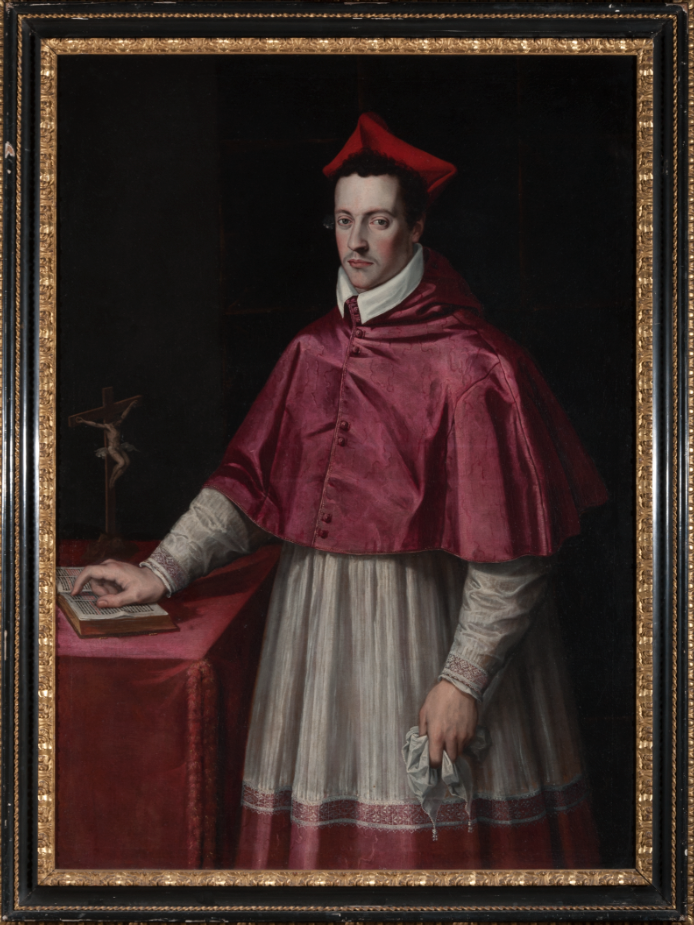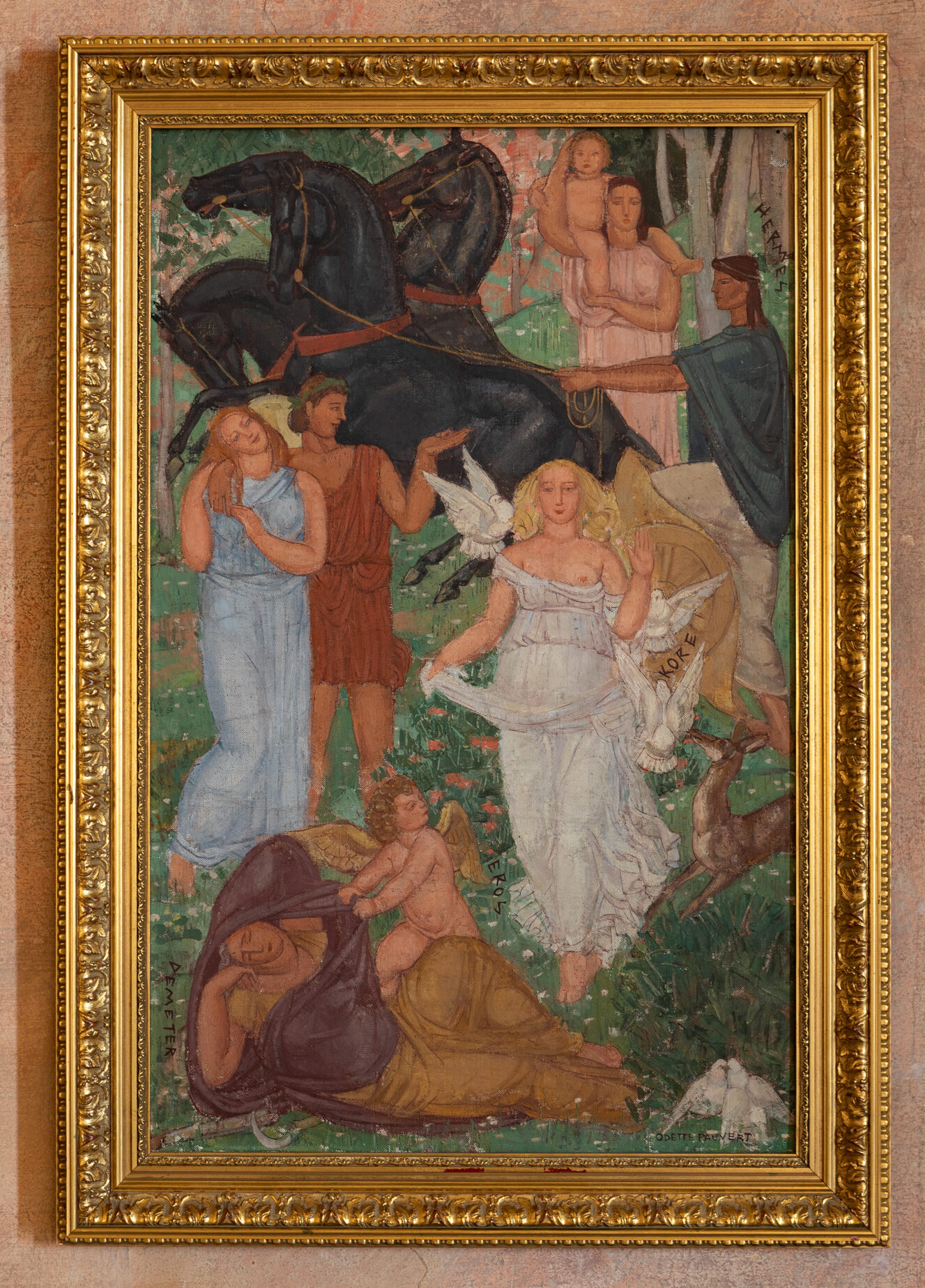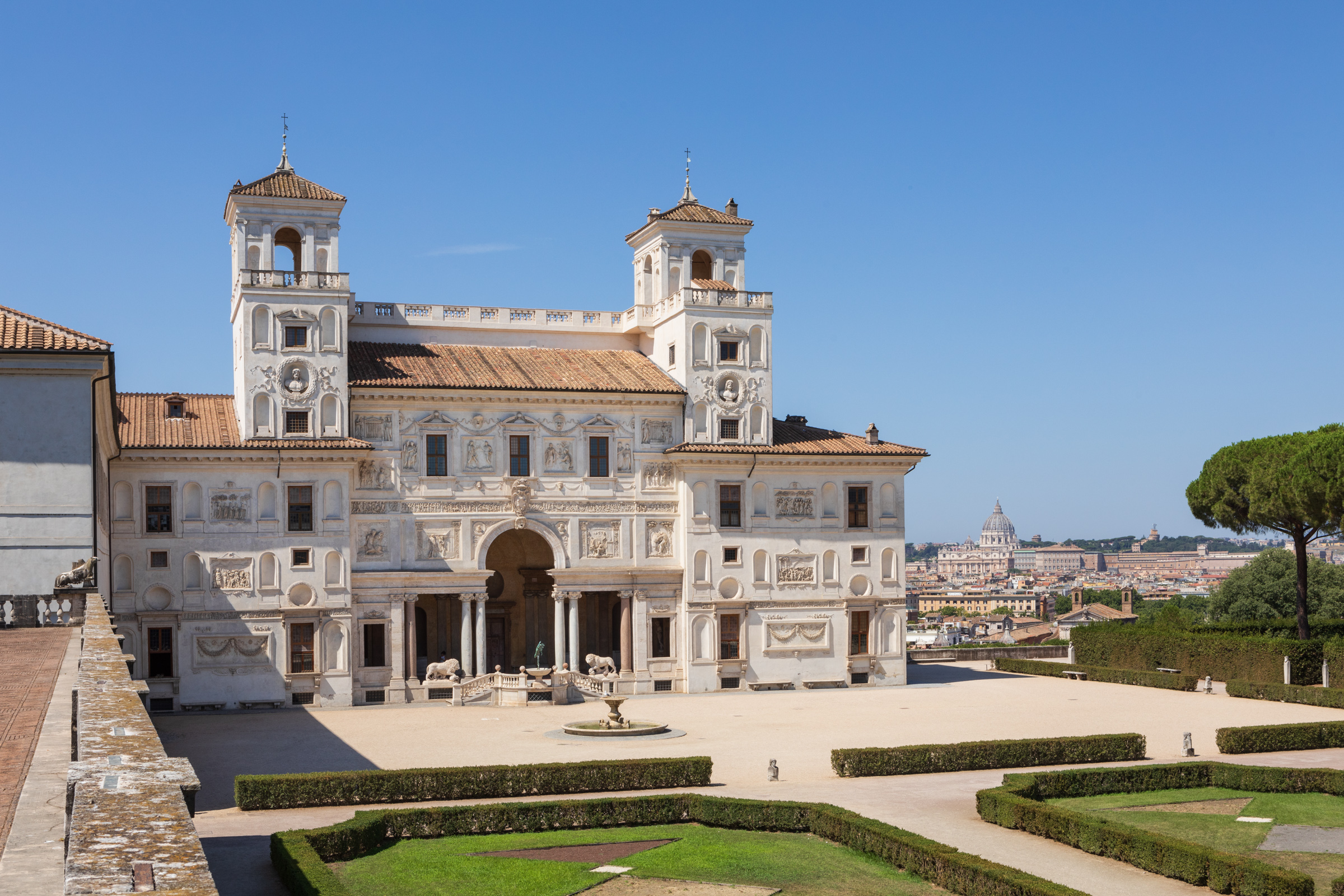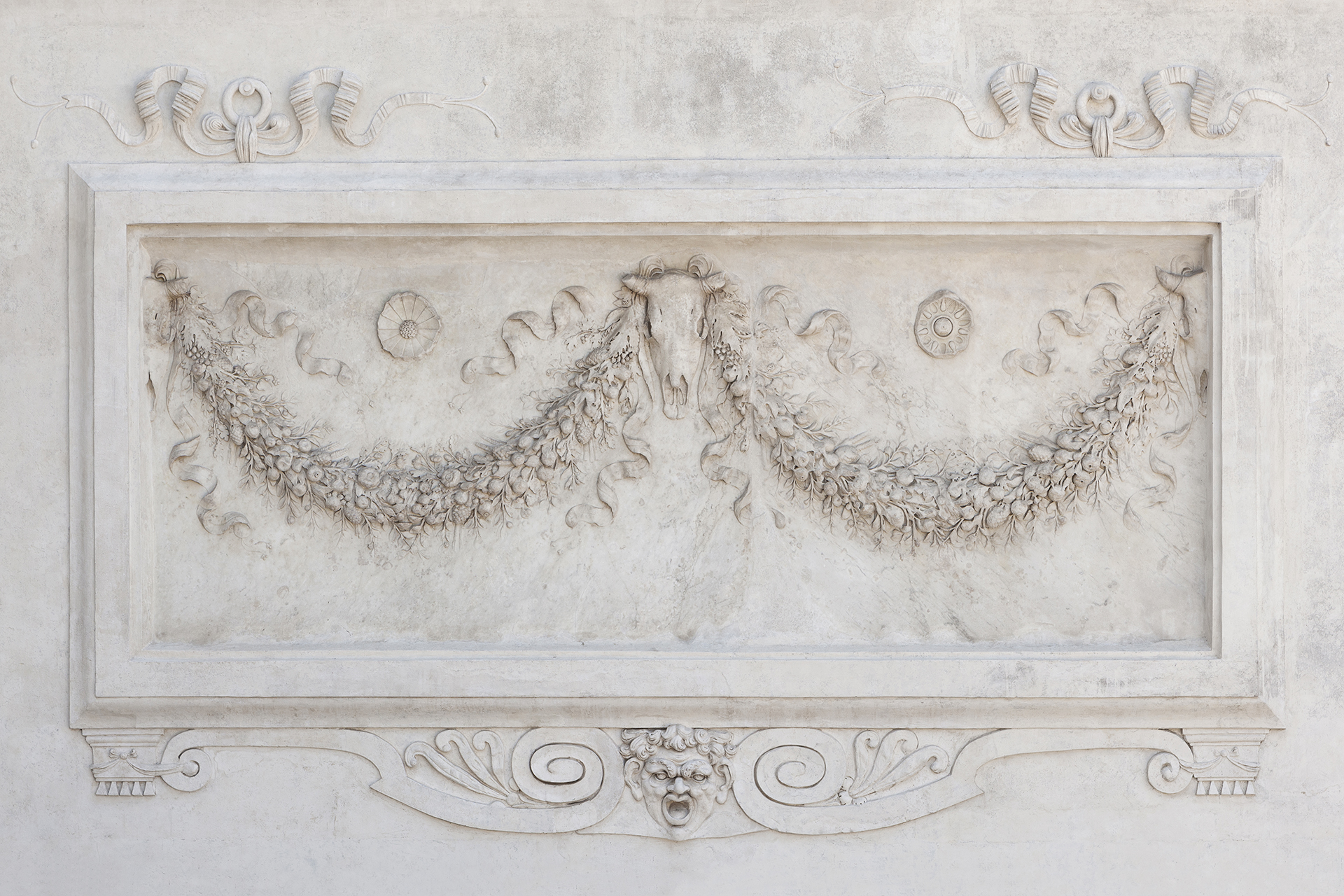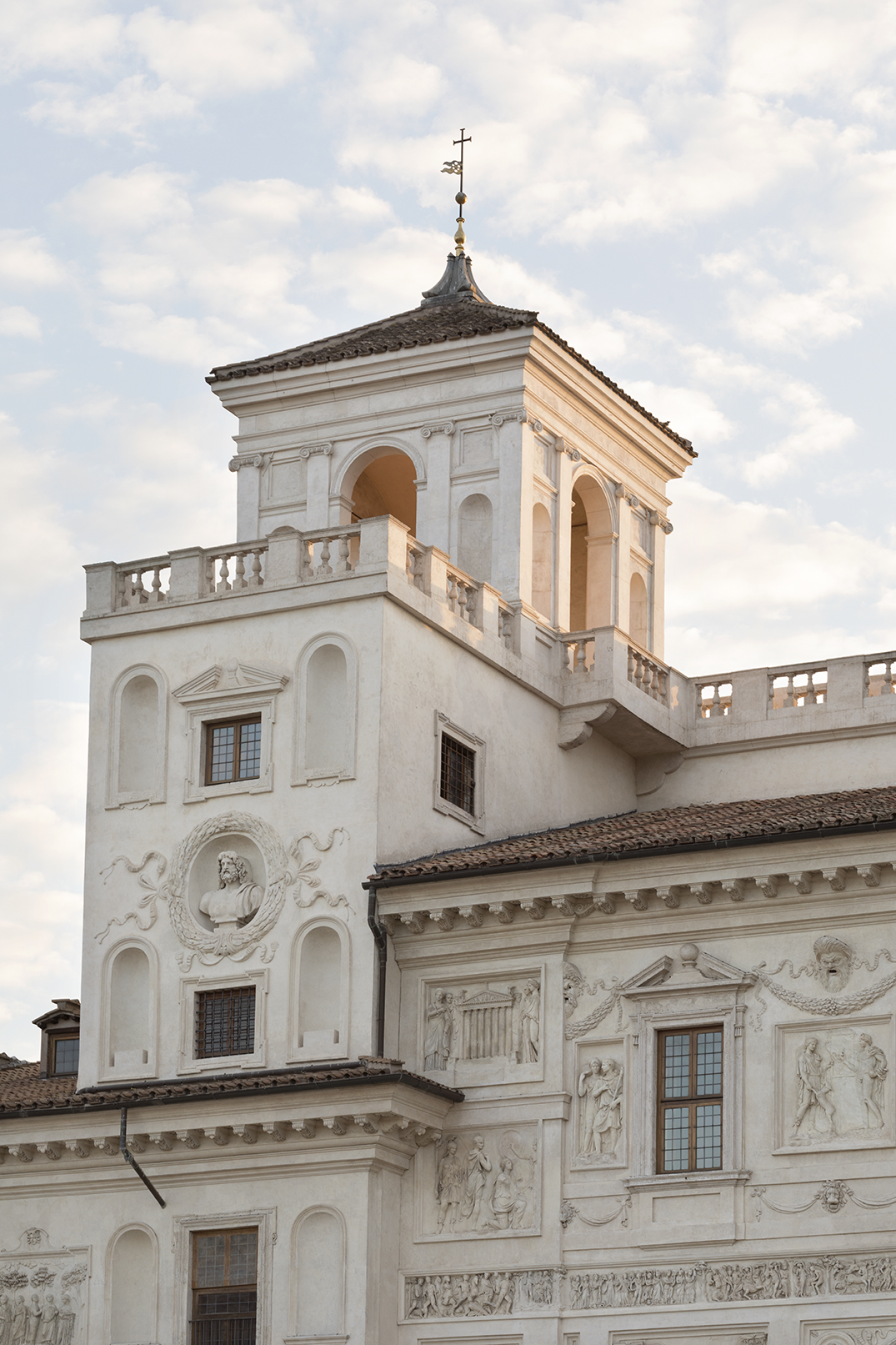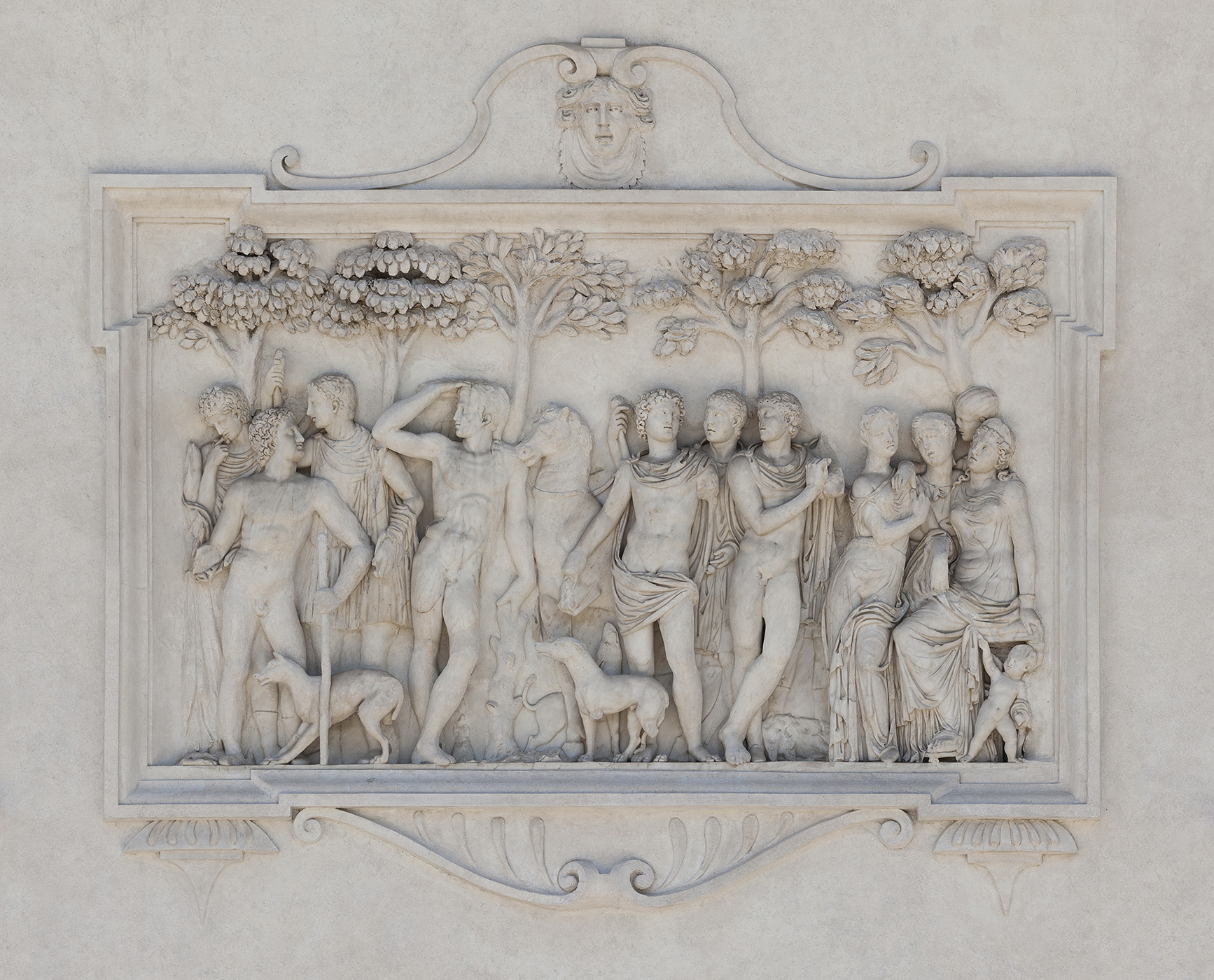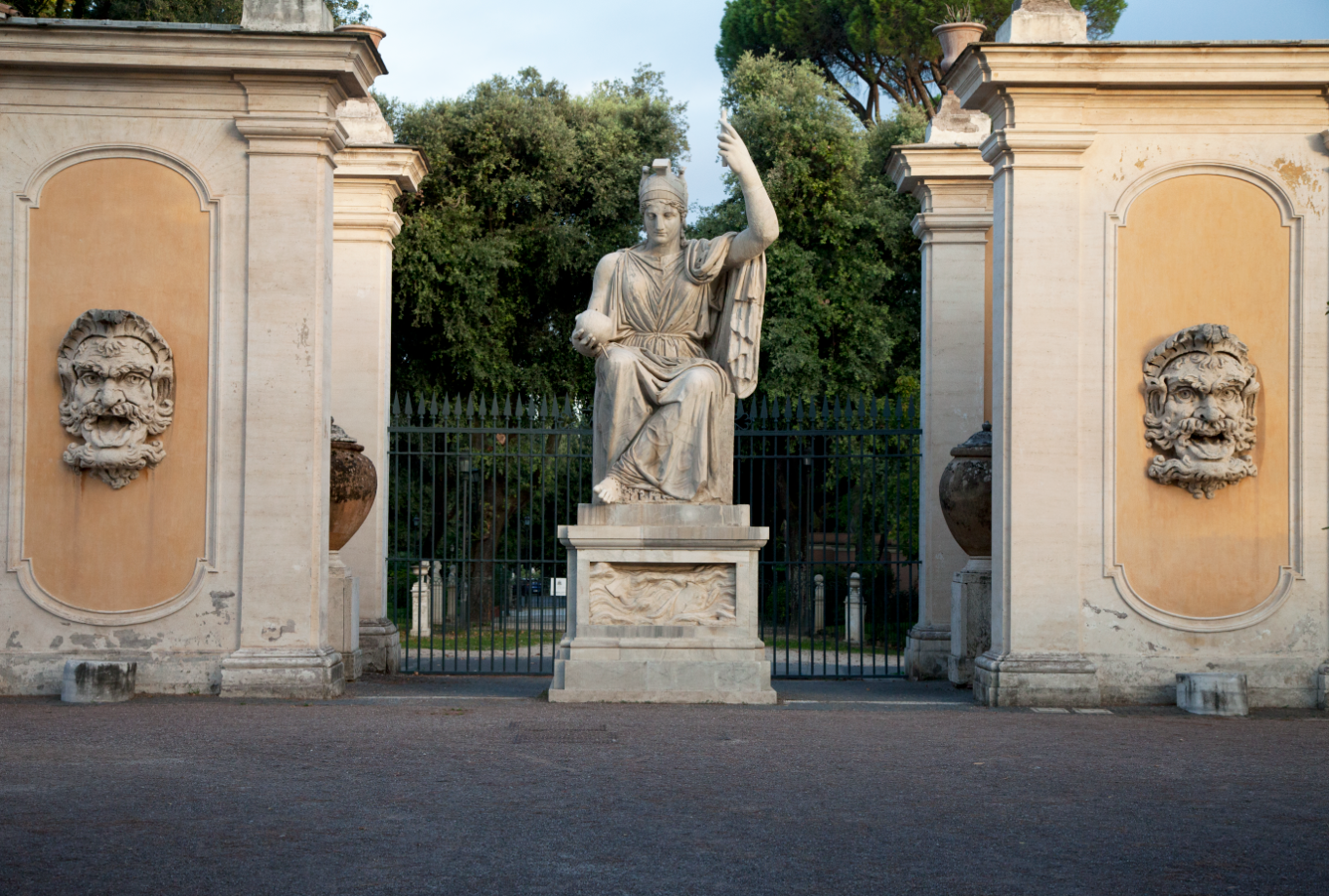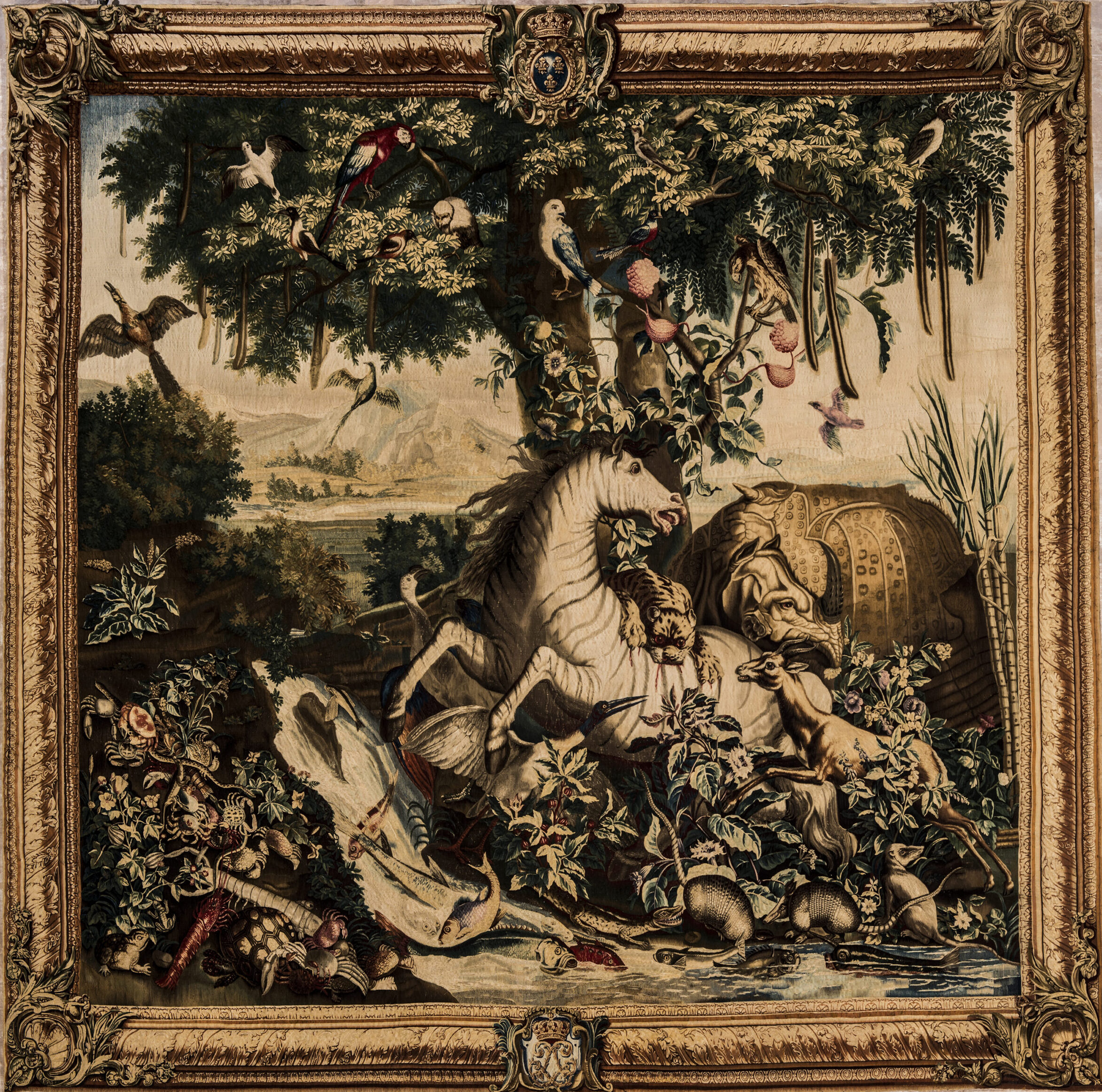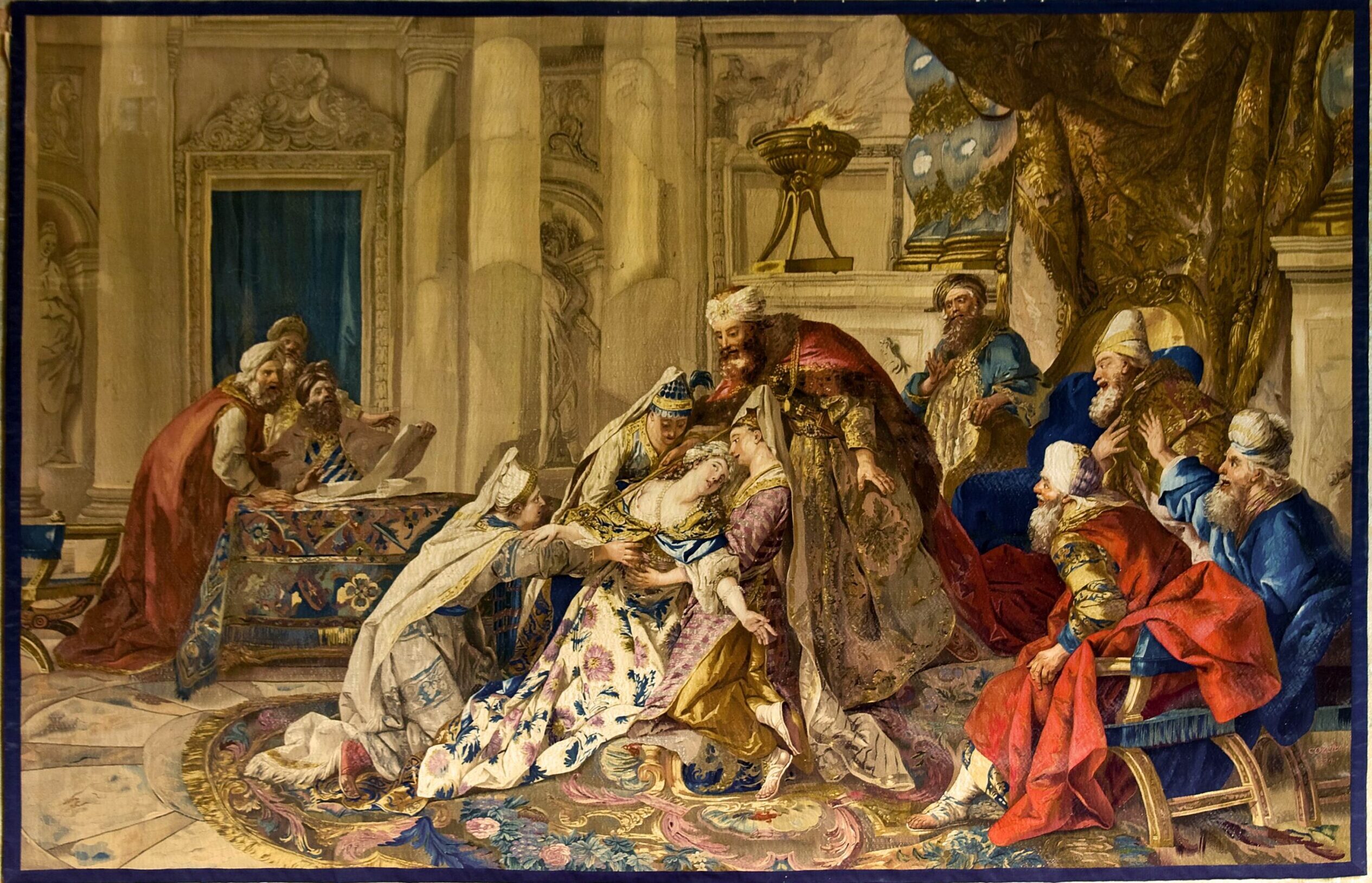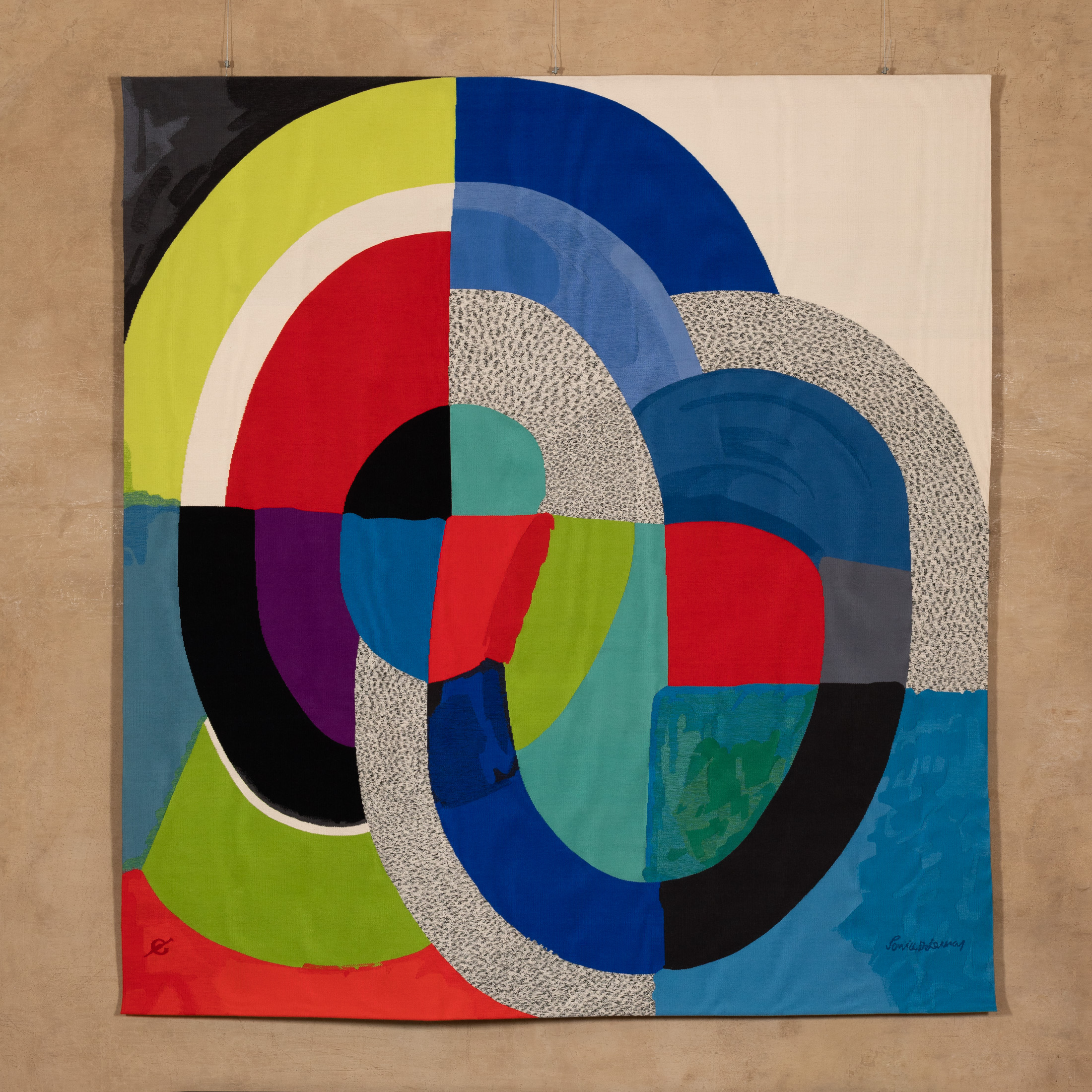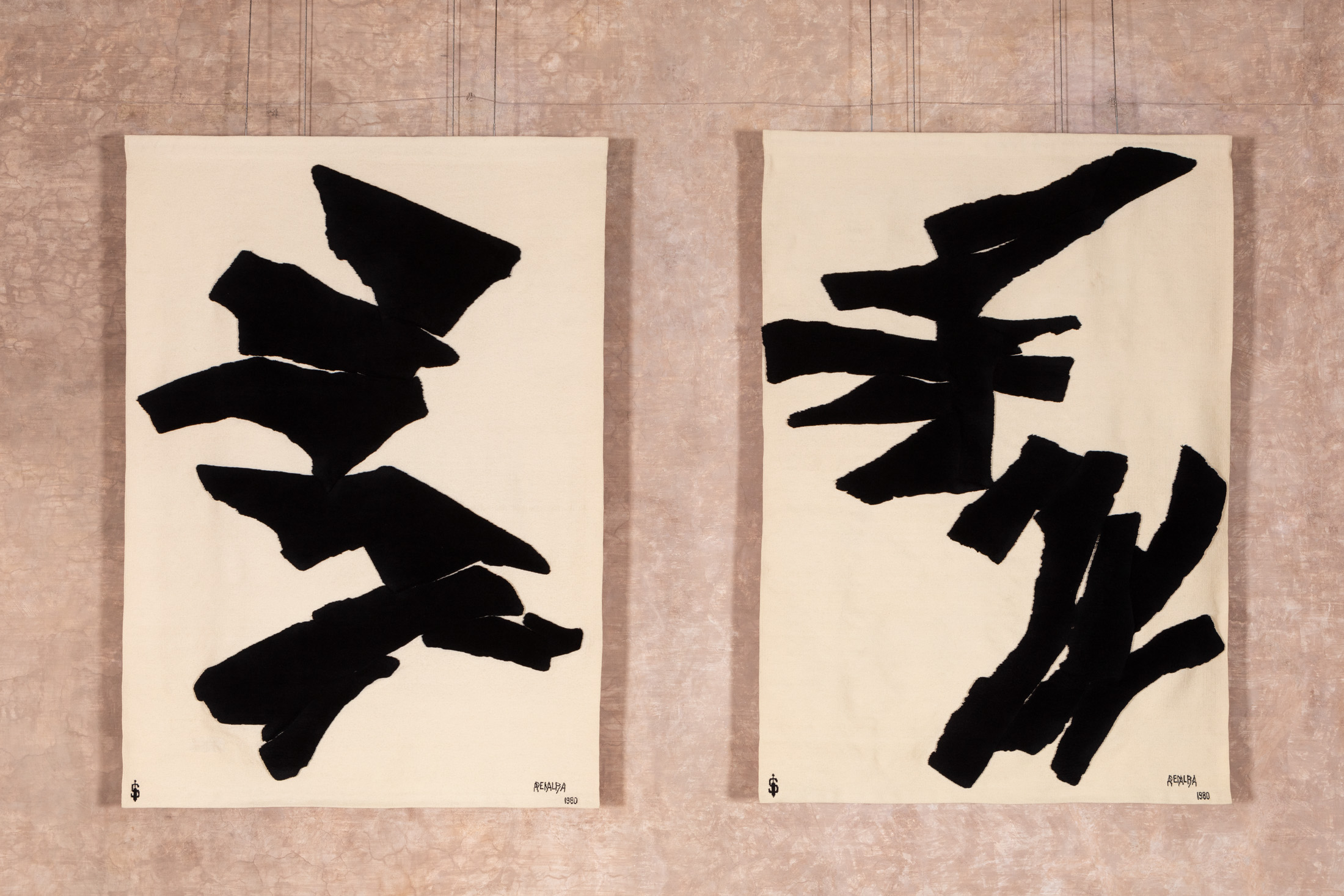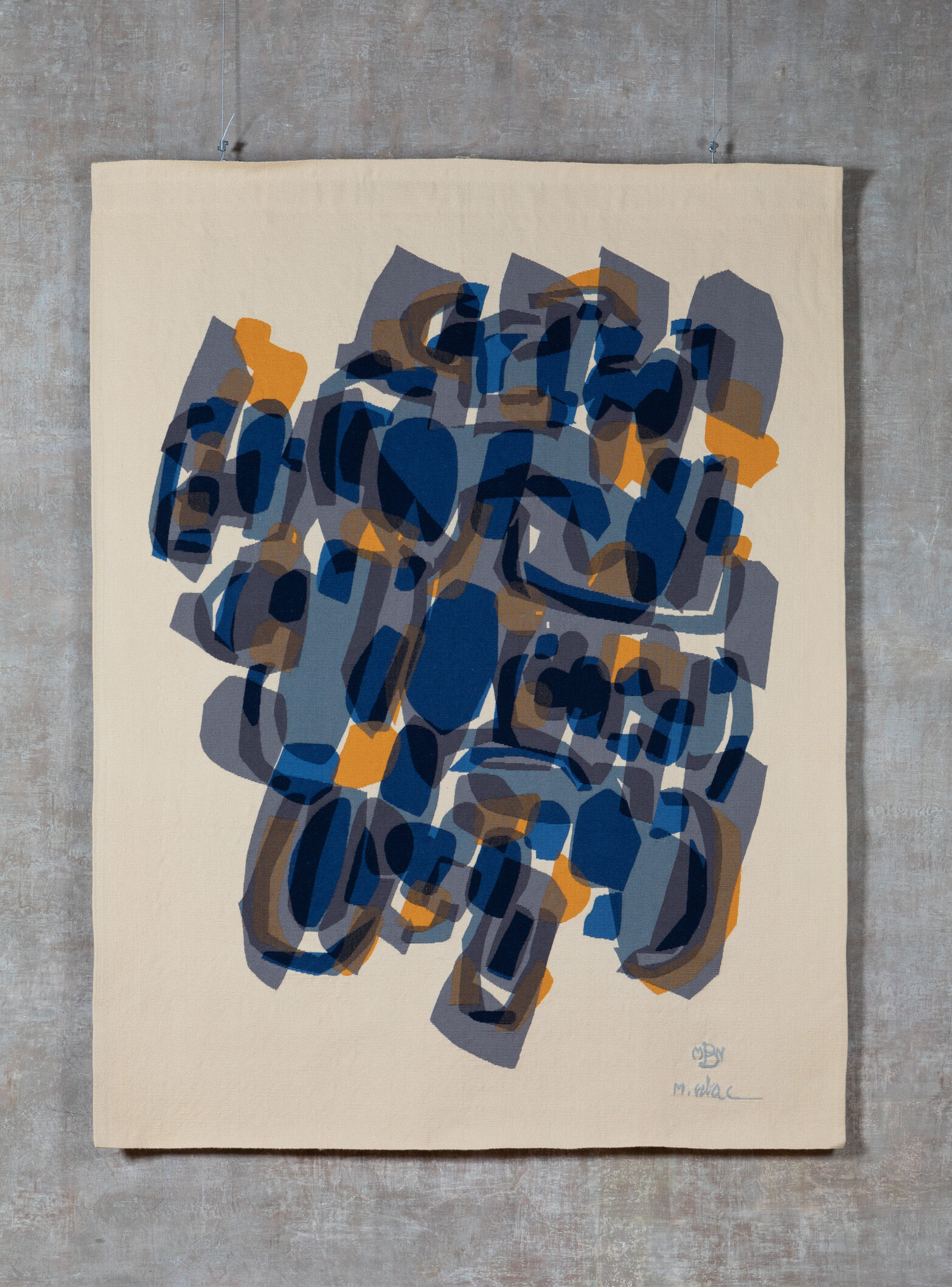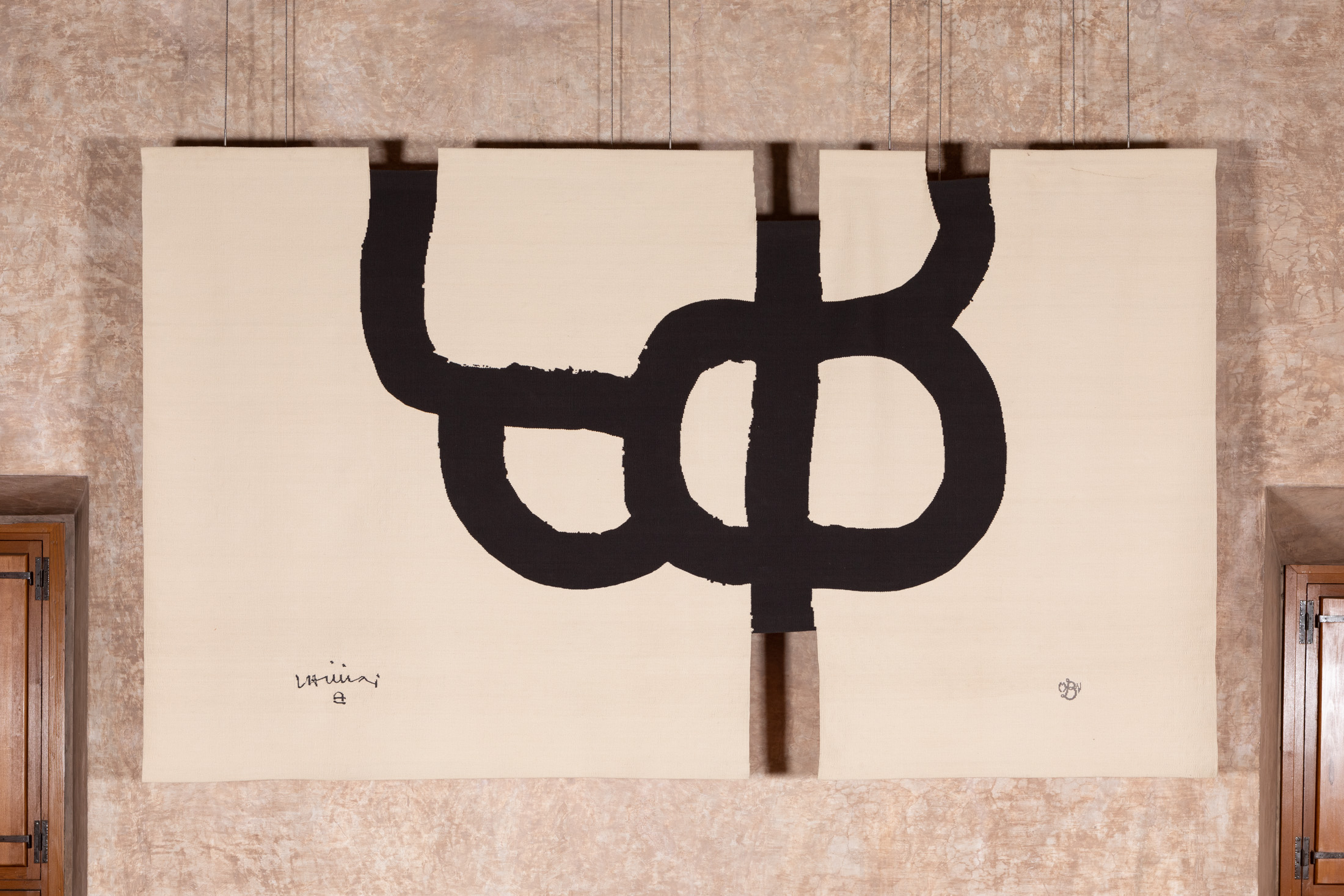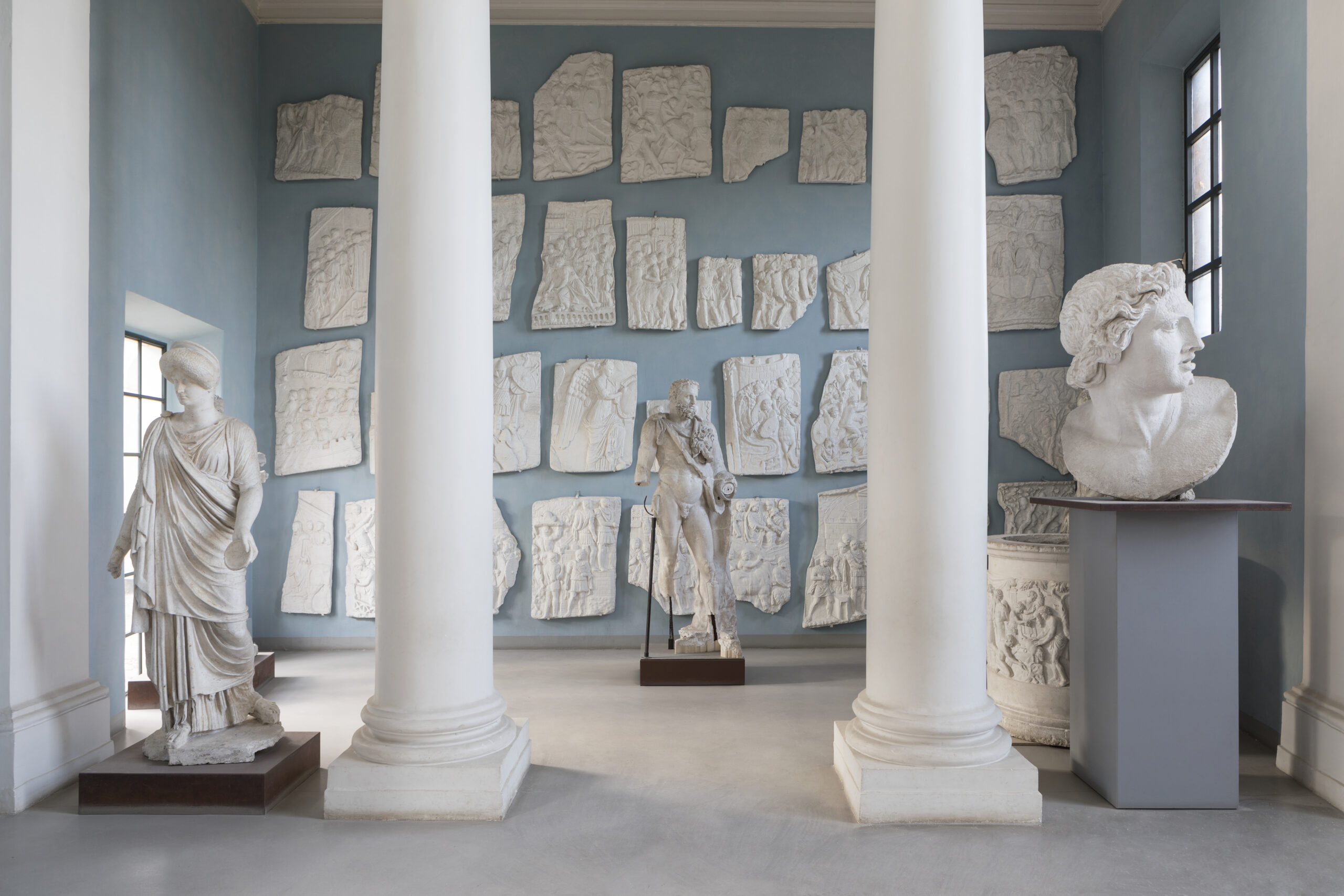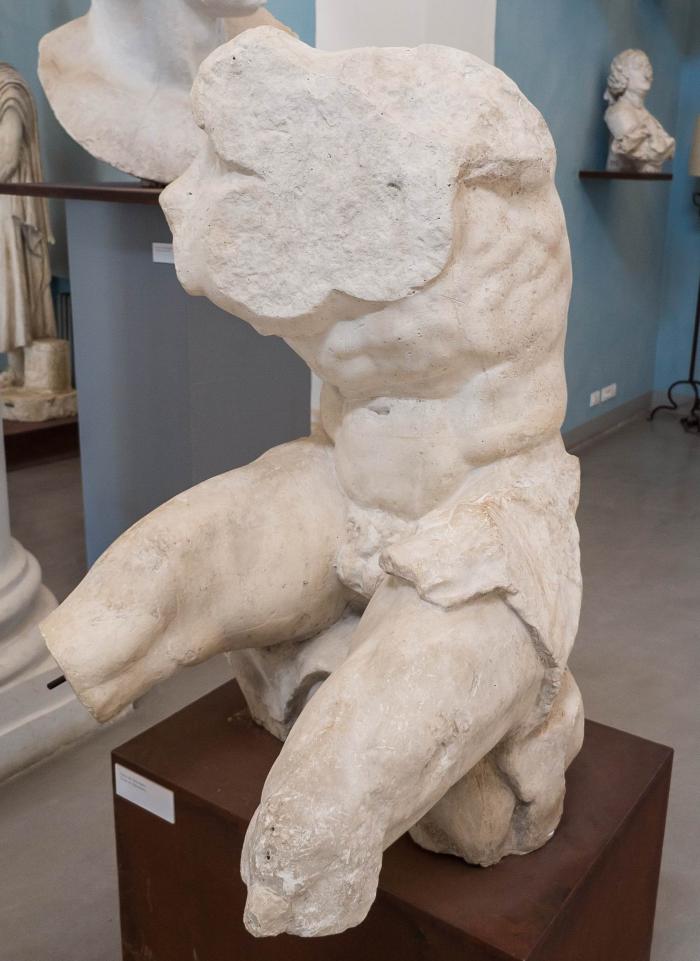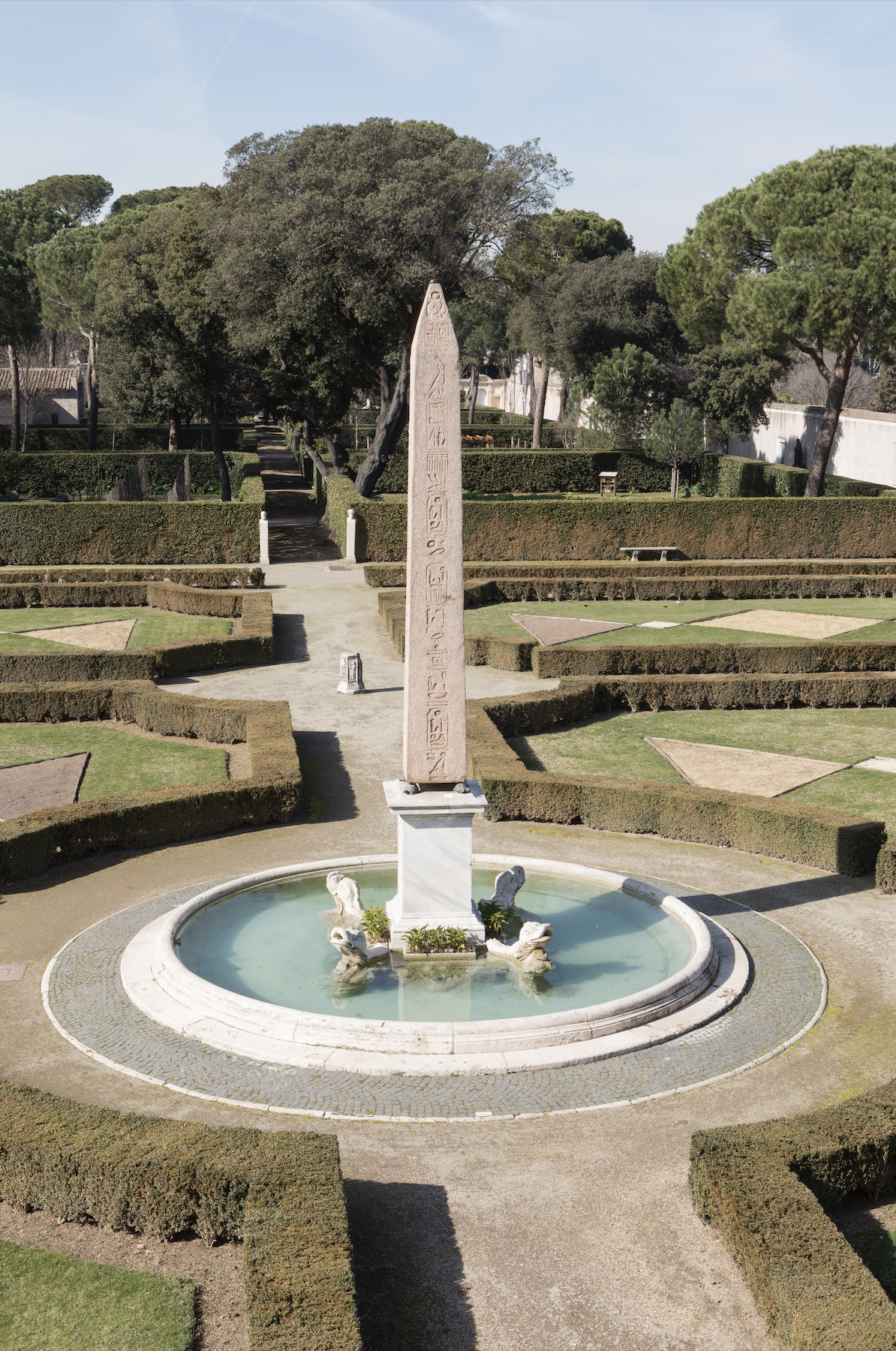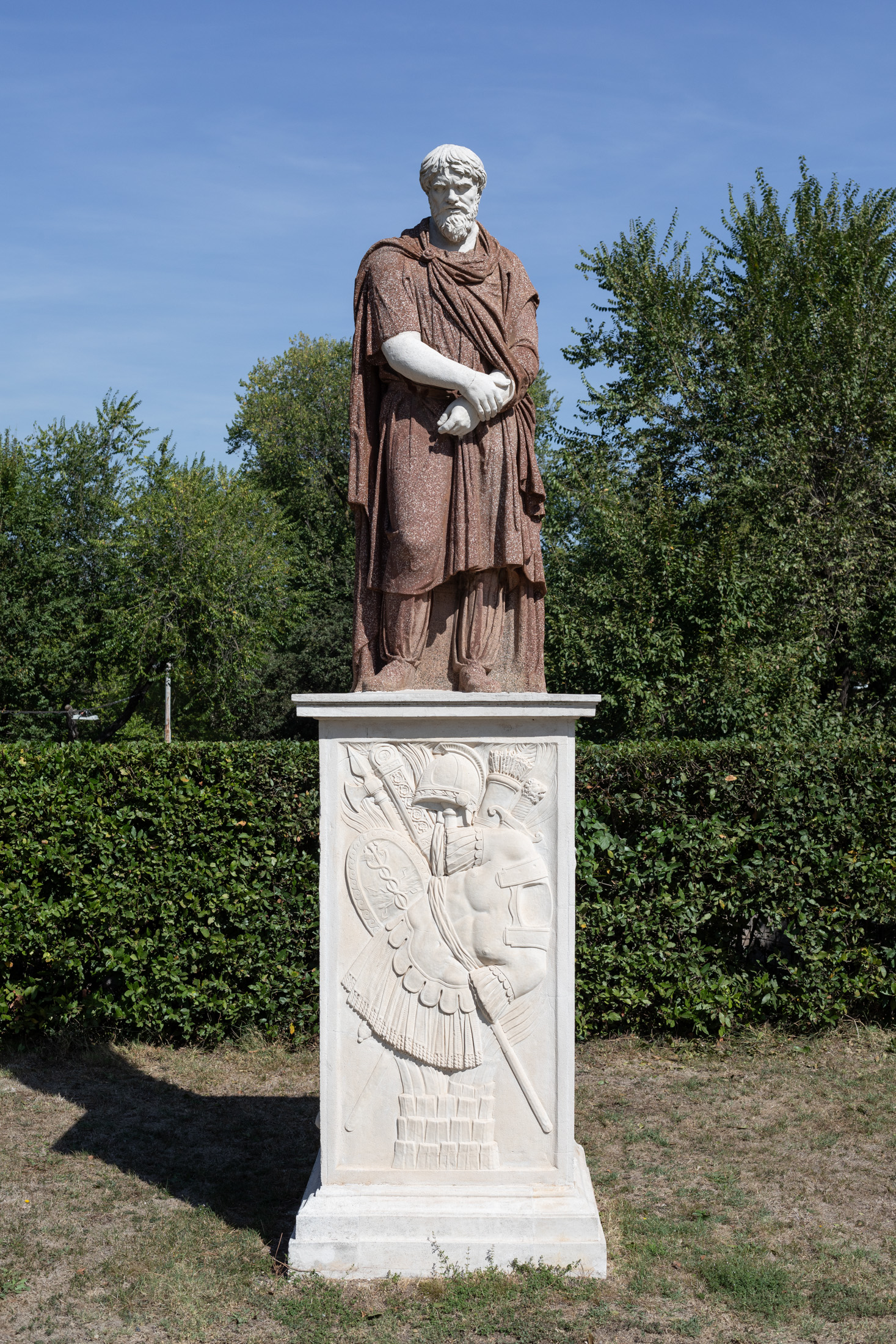Search
The collections

The French Academy in Rome preserves a collection of nearly 5,000 works. Some of these are exhibited in Villa Medici and its gardens and are regularly studied and restored.
Overview of the collection
The collection of the French Academy in Rome features numerous pieces of historic furniture, contemporary art and design objects, and a substantial collection of plaster casts, with pieces dating back to the time of Louis XIV. Works also include 17th- and 18th-century tapestries, ancient bas-reliefs, and medals. The painting section has about 500 works, including 463 portraits of fellows made between 1798 and 1936. The Academy also has a wide-ranging collection of historical musical instruments, an important collection of graphic art consisting of engravings, drawings and watercolors, and a photo library with about 16,000 photographs, including prints, works in ektachrome and negatives. The Academy is also a repository for works from French collections, particularly from the Mobilier national.
A family home
In 1576, Cardinal Ferdinando I de’ Medici moved into the Roman villa that today bears his name: he did major renovations and spread his sumptuous collection of works of art throughout the palace and gardens. In 1587, when he became Grand Duke of Tuscany and moved to Florence, he took a large part of his collection with him. Today it is preserved in the Uffizi Gallery, the Loggia dei Lanzi, the Boboli Gardens and the Bargello Museum.
Created in 1666 by Louis XIV, the French Academy in Rome also has a collection that was built up over the centuries, and works by the fellows in particular. After the looting in 1793 of the Mancini Palace, where it was formerly located, the Academy of France in Rome was established in 1803 at the Villa Medici. Alongside the works rescued from the looting and rare antique works left by Ferdinando de’ Medici, the sculpture collection was enhanced by plaster copies made by the Academy’s fellows.
The tradition of the portraits
Along with forty other paintings, the portraits of the fellows, made during their stay at the Villa Medici following a widespread tradition in the Roman academies, make up the painting collection of the French Academy in Rome. The portraits include famous subjects such as Ingres, Berlioz, and Debussy, with a total of 463 portraits made between 1810 and 1935. Executed by painters who were fellows, these works became a tradition that probably dates back to the 18th century and continued until 1935.
Today, the collection of Villa Medici paintings has been expanded further with recent acquisitions, including Jacopo Zucchi’s Portrait of Cardinal Ferdinando de’ Medici (1575), Chambre de l’artiste à la Villa Médicis, dite la chambre turque (1850) by Alfred de Curzon, Le Retour sur terre de Coré et l’avènement du printemps (1925-1930) by Odette Pauvert, the Galilée (1815) by François-Marius Granet, or Trinité-des-Monts vue du Pincio (1928) by Maurice Denis.
These works are complemented by a comprehensive collection of graphic art, including the bequest of the fellow and architect Alfred Normand, a complete series of Piranesi’s albums, and an exceptional set of tapestries. These include two from the Seasons cycle made to designs by Francesco Salviati, as well as tapestries from the cycles of the so-called Indies and the Story of Esther, saved from the looting of Palazzo Mancini. Finally, there is also room for an important collection of antique and contemporary furniture (more than 900 pieces, mostly acquired by Balthus).
Exceptional originals
At Villa Medici, visitors can still admire some extraordinary ancient masterpieces from Ferdinando de’ Medici’s collection. These include the monumental marble sculpture of the Goddess Rome, more than 5 meters high, which welcomes guests to the gardens. The goddess’ helmet, adorned with two she-wolves, recalls the founding myth of the eternal city. The imposing work, found during excavations at the Quirinale, was given to Ferdinando de’ Medici by Pope Gregory XIII. It was perhaps the goddess’ role as Rome’s protector that made it possible to prevent it from being moved to Florence, unlike other ancient pieces in the cardinal’s collection.
Elsewhere in the gardens, ancient remains – columns, capitals, stelae –have been arranged according to an evocative poetics of ruins that evokes the imagery of the Academy’s fellows and painters in the 18th century. One of the funerary stelae, in memory, bears the names of scholars who died at the front during World War I, engraved by their own comrades.
A facade adorned with ancient bas-reliefs
In the gardens, the villa’s façade offers another perspective on Ferdinando de’ Medici’s collection. In 1584, the latter acquired Cardinal Andrea della Valle’s prestigious collection of antiquities, including numerous bas-reliefs. That same year, Ferdinando commissioned architect Bartolomeo Ammannati to arrange the reliefs on the facade facing the gardens. Arranged symmetrically around the three serlians of the loggia, the bas-reliefs, dating from the 2nd and 3rd centuries, reflect the Renaissance taste for antiquity and pay homage to Roman sculpture of the imperial era.
On the central body are prominent scenes from the temple of the mother goddess Cybele, accounts of Trajan’s wars against the Dacians, and Hercules fighting the Nemean lion. On the sides are monumental festoons from the Ara Pacis, the altar built by Augustus in 9 B.C. in honor of Pax, the goddess of Peace. Emerging amidst whorls of acanthus, fruits and flowers, are bucrania, symbols of animal sacrifices offered to the goddess. Ferdinando de’ Medici had acquired these reliefs from Cardinal Ricci at the same time he purchased the villa.
Originally the facade was painted white, but from the 1870s it took on a darker hue, caused both by aging of the patina and the application of ochre-colored plasters. Restoration work carried out between 1994 and 1996 brought the the facade back to its splendid camaïeu of whites, achieved by the harmonious use of ancient marble, travertine, and stucco. This renovation was crucial, since Villa Medici, with its dominant position on the Pincio Hill, represents an emblematic landmark in Rome’s urban landscape.
Exceptional tapestries
Villa Medici houses an important collection of tapestries. The historical tapestries include two examples of the Four Seasons cycle: The Autumn et The Spring (1574-1651), the Tenture des Indes (1723-1726) and the Esther cycle (1774). They offer a glimpse into the transformations by European imaginations over the centuries, and reveal significant heritage, cultural and historical issues.
The Autumn and Spring
The allegorical tapestries of Autumn and Spring, based on designs by Mannerist painter Francesco Salviati (1510-1563), bear witness to the exceptional skills of Brussels’ 17th-century weavers. Bequeathed to Villa Medici by the Italian art historian and collector Federico Zeri, they will be the subject of a major conservation restoration campaign in 2021-2022, thanks to the skilled sponsorship of Ateliers Bobin Tradition.
La Tenture des Indes
Presented to the French Academy in Rome by King Louis XV, the Tenture des Indes adorned the piano nobile of Palazzo Mancini on Via del Corso, the Academy’s headquarters until the end of the 18th century. Woven by the Manufacture Royale des Gobelins, the Tenture des Indes consists of eight pieces. Although conceived as an ambitious “portrait” of Brazil, based on drawings and paintings by Albert Eckhout (1610-1665) and Frans Post (1612-1680), the group evokes an “exotic” elsewhere, referred to generically as the “Indies”, which blends the flora and fauna of South America with plants and animals from the African continent, and even imaginary species. These artifacts celebrate a fantastical abundance, intertwined with motifs evoking the exploitation and colonization policies of the New World, in which both the Amerindian populations and the African slaves present in the colonies are represented. The study and promotion of the collections is one of the Academy’s missions, and this is reflected in the organization of symposia, the hosting of researchers at Villa Medici and the production of texts, to continue to analyze and illuminate the heritage. To find out more about the Tenture des Indes, read the article by Cécile Fromont and the interview with Gerlinde Klatte in Studiolo no. 18.
The Esther cycle
Of the seven paintings that make up the complete tapestry dedicated to the Old Testament heroine Esther, only two are preserved at Villa Medici and adorn the Chambre des Amours: Toilette d’Esther and Évanouissement d’Esther. These tapestries, some of the finest productions of the Manufacture des Gobelins, were woven from cartoons created by the artist Jean-François de Troy (1679-1752) when he was director of the Academy. Each tapestry took between two and three years to complete.
In dialogue with the historical tapestries, a group of modern and contemporary tapestries adorn the walls of Villa Medici, on loan from the Mobilier national. They are by Louise Bourgeois, Patrick Corillon, Eduardo Chillida, Sonia Delaunay, Sheila Hicks, Aurélie Nemours, Alicia Penalba and Raoul Ubac.
The furniture
A place to live, work and meet, Villa Medici also houses a collection of antique furniture from the 17th and 18th centuries, creations by Balthus (lamps) and Richard Peduzzi (tables, chairs, lamps) as well as contemporary designers: Chiara Andreatti, Ronan and Erwan Bouroullec, Noé Duchaufour-Lawrance, India Mahdavi, Toan Nguyen, David Lopez Quincoces. From India Mahdavi’s four-poster bed to the Via Appia table designed by Noé Duchaufour-Lawrance in homage to the famous ancient road, contemporary design shines at Villa Medici (find out more).
Musical instruments
Music is also at the heart of the Villa Medici collections, reflecting the importance of this discipline at the French Academy in Rome since the creation of the Grand Prix de Musique in 1803. Renowned composers have stayed at the Academy: Boulanger, Berlioz, Gounod, Bizet, Massenet, Debussy, Ravel.
In 2023, Villa Medici launched a major restoration project for five historical instruments in its collections: a Pleyel piano from the early 20th century (restoration in 2024-2025), a harpsichord from the late 17th century and a positive organ from the 18th century (restoration in 2025), a 19th-century Erard pianoforte and a Gaveau piano dating from the late 1920s (restoration in 2026).
This campaign has a dual objective: to promote the heritage of Villa Medici while developing a musical programme that includes the restored instruments.
The scientific committee responsible for overseeing these restorations includes: Sonia Martone, director of the Museo Nazionale degli Strumenti Musicali; Anne Piéjus, research director at the CNRS; Christine Laloue, curator at the Musée de la Musique, in charge of harpsichords, fine arts and archives returned to collections from manufacturers/lutherie; Christian Lutz, technical advisor approved by the French historical monuments, organ specialist; Thierry Maniguet, curator at the Music Museum, in charge of pianos and the museum’s conservation and research team; as well as the director of the art history department of the French Academy in Rome.
The art of copying in the 17th and 18th centuries
The Villa Medici collection reflects the work of the Fellows in residence, based on the central idea of copying through the casting technique. Over the generations, a collection of “modern antiquities” has been built up, bearing witness to the great masterpieces of Antiquity and the Renaissance that were present in Rome in the 17th and 18th centuries. Inaugurated in 2009 under the direction of Fréderic Mitterrand in one of the former workshops located on the walls of Aurélien, the gypsothèque houses part of this precious collection of plaster prints from the Academy. It includes casts of major works from the Classical and Hellenistic periods, including the famous Belvedere torso that has fascinated artists for centuries, the striking head of Montecavallo’s Dioscurus, and the oldest existing casts of fragments of the Trajan column, made in the time of Louis XIV. The opening of the gypsothèque to the public in 2009 marks the recognition of these heritage objects and the start of new research carried out in collaboration with the Musée du Louvre. This makes it possible to analyze the materials and sophisticated techniques developed by the Academy’s artists for these casts, and to better understand their history.
Balthus and copying in the 20th century
Aware of the importance of copying, Balthus, director from 1961 to 1977, decided to restore the Renaissance character of Villa Medici’s gardens by installing copies of Ferdinando de Medici’s antiques, such as the obelisk in the Fountain of the Dolphins, the Dacian prisoners and the Niobids. In 1972, fellow and sculptor Michel Bourbon was commissioned to cast the originals for the copies. To create the copies, he developed an avant-garde recipe: a mixture of marble and epoxy resin.
The Niobids group, a replica of the 1st- and 2nd-century originals housed at the Uffizi in Florence, recounts the myth of Niobe, queen of Thebes who dared to boast that she had given birth to more children than Leto, the mother of Artemis and Apollo. To avenge the insult to their mother, the brother and sister shoot Niobe’s unfortunate offspring with their arrows.
Not only did Balthus decide to replicate this sculptural group, but he also designed a scenic setting in the gardens. With artificial rocks, lush vegetation, and gushing water, he created an evocative atmosphere to accommodate the replica.
For the replica of the over 20-foot-tall obelisk that adorned the Fountain of the Dolphins, Michel Bourbon made a cast from the original in the Boboli Gardens in Florence. The obelisk, made of pink Aswan granite, had come to Rome in the first century and was later acquired by Ferdinando de’ Medici.
Casts of three Dacian Prisoners, draped in red porphyry, were also made by Michel Bourbon in 1975. In 2020, these casts underwent an innovative bio-restoration, performed with essential oils, in collaboration with two master restorers from the Vatican Museums’ marble restoration workshop.
Crossing the Threshold of Villa Medici
Visit
Step inside one of the most beautiful Renaissance villas in the heart of the Italian capital and travel through Renaissance Rome, the Rome of the 17th- and 18th-century Grand Tour, all the way to the Rome of today....
Set down your Suitcases at Villa Medici
A Night at Villa Medici
Sleep at Villa Medici, a unique place in Rome where the spirit of the Renaissance blends with contemporary design.
